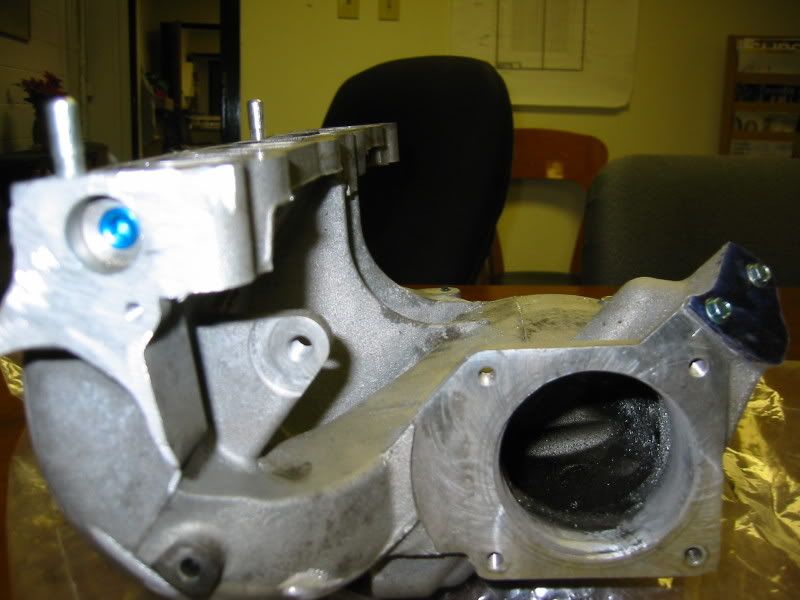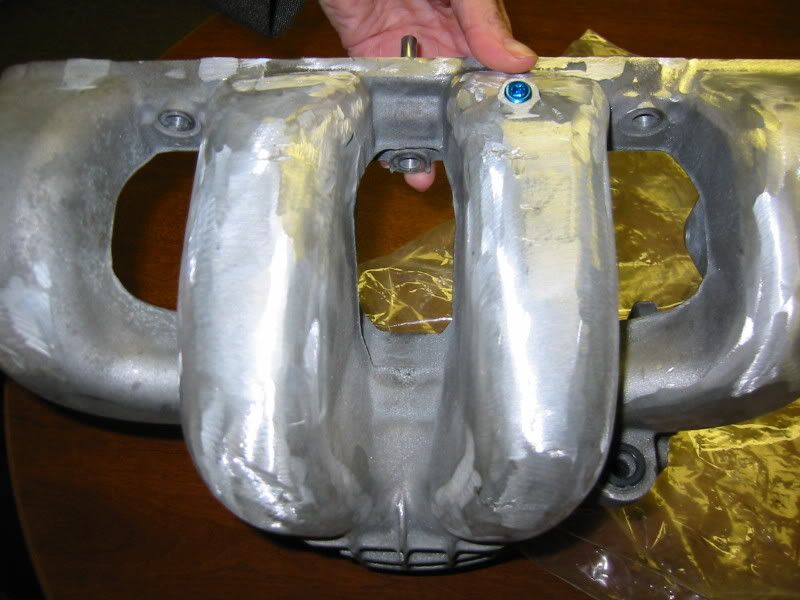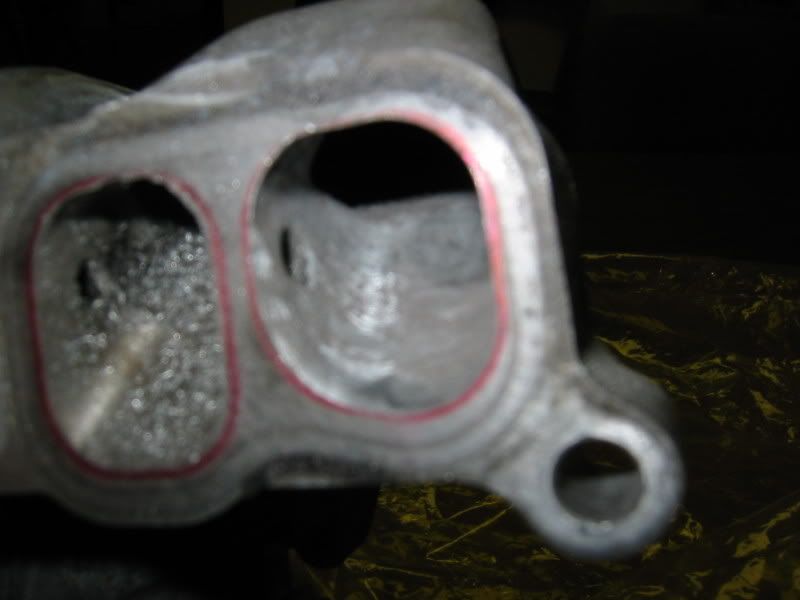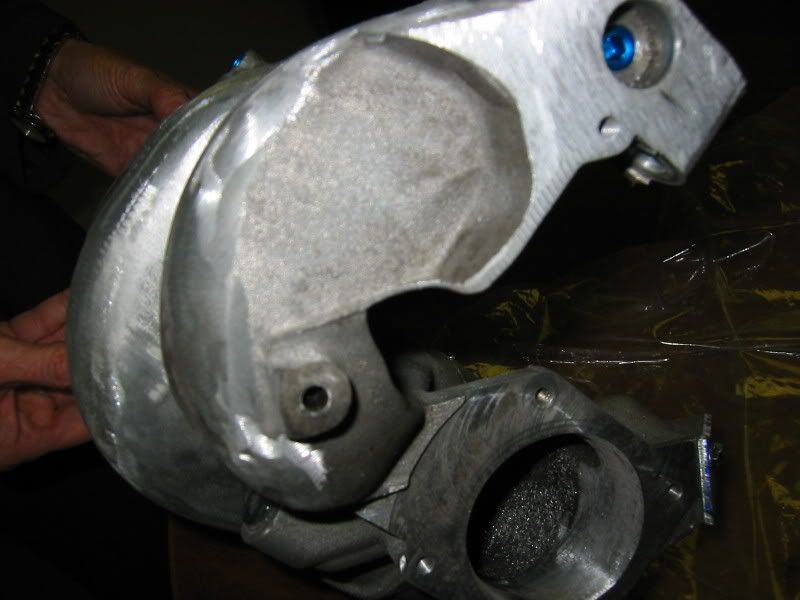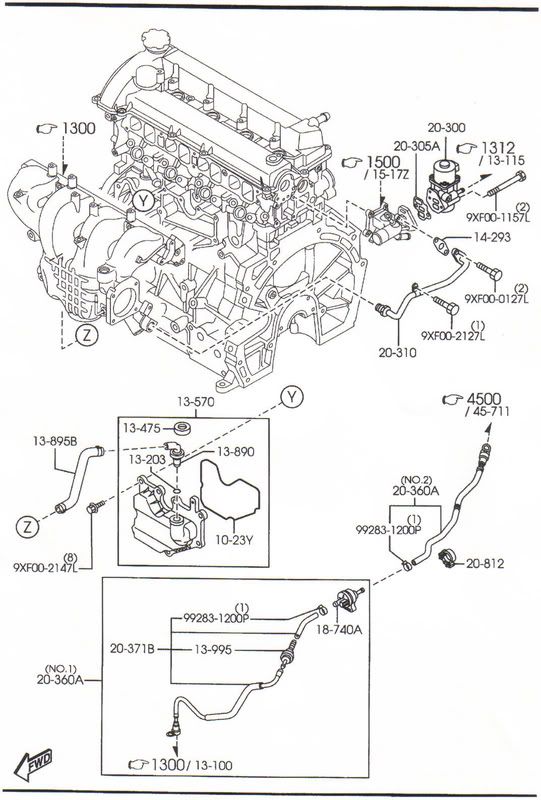the forums seemed dead as hell today so I thought I'd post some pics of my work so far on my intake manifold
just please keep in mind that I'm NOT FINISHEDI've spent only a few hours on the intake so far and have many more to go
I'm modding the inside and outside of this manifold
mostly all bosses have been cut off and smoothed on the exterior
I've cut off parts that aren't needed and shaped
final sanding and smothing will be done before getting powder coated(haven't decided on color yet)
I just started to go inside the intake
the port pic is the runner closest to the passenger side of the car which had the huge obstruction
As you can see, it is now as open as the other ports
I've removed the VCTS and have plugged the rod hole - all of the VCTS holes will be filled with quick steel and smoothed as well
The EGR tube area has been cut off and a block off plate was fabbed
*This is where the majority of the oily crap is coming from that pollutes the valves
I just started on the throttle body opeing as well
This intake will be a sweet addtition to my engine bay when complete and will flow a better than stock
The single best thing to come out of this modded intake is the fact that my intake will be clean on the inside and stay that way after installed.
![Image]()
![Image]()
![Image]()
![Image]()
just please keep in mind that I'm NOT FINISHEDI've spent only a few hours on the intake so far and have many more to go
I'm modding the inside and outside of this manifold
mostly all bosses have been cut off and smoothed on the exterior
I've cut off parts that aren't needed and shaped
final sanding and smothing will be done before getting powder coated(haven't decided on color yet)
I just started to go inside the intake
the port pic is the runner closest to the passenger side of the car which had the huge obstruction
As you can see, it is now as open as the other ports
I've removed the VCTS and have plugged the rod hole - all of the VCTS holes will be filled with quick steel and smoothed as well
The EGR tube area has been cut off and a block off plate was fabbed
*This is where the majority of the oily crap is coming from that pollutes the valves
I just started on the throttle body opeing as well
This intake will be a sweet addtition to my engine bay when complete and will flow a better than stock
The single best thing to come out of this modded intake is the fact that my intake will be clean on the inside and stay that way after installed.
